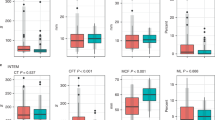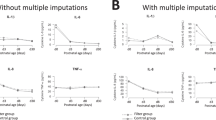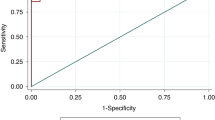Abstract
OBJECTIVE: Neonates who are treated with low-molecular-weight heparin require repeated venipunctures to monitor anti–factor Xa (anti-FXa) levels. Generally, blood withdrawn from umbilical artery catheters (UACs) is not useful for such monitoring because heparin in the fluids running through the catheters contaminates the results. We tested methods for collecting blood for anti-FXa levels from UACs through which heparin-containing fluids were running, in an attempt to reduce the need for repeated venipunctures of anticoagulated neonates.
STUDY DESIGN AND METHODS: A new blood drawing port, through which no heparin was run, was added to the UAC system. Qualifying neonates with UACs were randomized to have anti-FXa levels drawn after line-clearing volumes of 0.5, 3.0, or 4.0 ml.
RESULTS: Twelve patients with UACs were enrolled and all completed the study with no adverse events. When 0.5, 3.0, or 4.0 ml of blood was cleared from the UAC before withdrawing the test sample, heparin contaminated the test (anti-FXa levels ≥0.1 U/ml) in 66%, 16%, and 8% of samples, respectively. Differences between the 0.5- vs. 3.0-ml line-clearing volumes and between the 0.5- vs. 4.0-ml clearing volumes were significant (p=0.0026 and 0.0006, respectively).
CONCLUSION: Blood samples for anti-FXa can be drawn from UACs through which heparin-containing solutions are infusing if a port is added through which no heparin-containing fluids are run, a line-clearing volume of at least 4.0 ml is drawn, and a contamination rate of 8% of samples is acceptable.
This is a preview of subscription content, access via your institution
Access options
Subscribe to this journal
Receive 12 print issues and online access
$259.00 per year
only $21.58 per issue
Buy this article
- Purchase on Springer Link
- Instant access to full article PDF
Prices may be subject to local taxes which are calculated during checkout

Similar content being viewed by others
References
Edstrom CS, Christensen RD . Evaluation and treatment of thrombosis in the neonatal intensive care unit Clin Perinatol 2000 27: 623–42
Calhoun DA, Christensen RD, Edstrom CS et al. Consistent approaches to procedures and practices in neonatal hematology Clin Perinatol 2000 27: 733–54
Hirsh J, Warkentin TE, Raschke R, Granger C, Ohman EM, Dalen JE . Heparin and low-molecular-weight heparin: mechanisms of action, pharmacokinetics, dosing considerations, monitoring, efficacy, and safety Chest 1998 114: 489S–510S
Rajani K, Goetzman BW, Wennberg RP, Turner E, Abildgaard C . Effect of heparinization of fluids infused through an umbilical artery catheter on catheter patency and frequency of complications Pediatrics 1979 63: 552–6
Andrew M, deVeber G . Pediatric Thromboembolism and Stroke Protocols Hamilton, Ontario: BC Decker 1997
Coatest LMW . Heparin/Heparin Moindal, Sweden: Chromogenix 1999
Kozek-Langenecker SA, Wanzel O, Berger R, Kettner SC, Coraim F . Increased anticoagulation during cardiopulmonary bypass by prostaglandin E1 Anesth Analg 1998 87: 985–8
Kozek-Langenecker SA, Kettner SC, Oismueller C, Gonano C, Speiser W, Zimpfer M . Anticoagulation with prostaglandin E1 and unfractionated heparin during continuous venovenous hemofiltration Crit Care Med 1998 26: 1208–12
Reinhardt AC, Tonneson AS, Bracey A, Goodnough SK . Minimum discard volume from arterial catheters to obtain coagulation studies free of heparin effect Heart Lung 1987 16: 699–705
Millis DL, Hawkins E, Jager M, Boyle CR . Comparison of coagulation test results for blood samples obtained by means of direct venipuncture and through a jugular vein catheter in clinically normal dogs J Am Vet Med Assoc 1995 207: 1311–4
Rudisill PT, Moore LA . Relationship between arterial and venous activated partial thromboplastin time values in patients after percutaneous transluminal coronary angioplasty Heart Lung 1989 18: 514–9
Mayo DJ, Dimond EP, Kramer W, Horne MK III . Discard volumes necessary for clinically useful coagulation studies from heparinized Hickman catheters Oncol Nurs Forum 1996 23: 671–5
Author information
Authors and Affiliations
Rights and permissions
About this article
Cite this article
Edstrom, C., McBride, J., Theriaque, D. et al. Obtaining Blood Samples for Anti–Factor Xa Quantification Through Umbilical Artery Catheters. J Perinatol 22, 475–477 (2002). https://doi.org/10.1038/sj.jp.7210763
Published:
Issue Date:
DOI: https://doi.org/10.1038/sj.jp.7210763
This article is cited by
-
The evaluation and management of postnatal thromboses
Journal of Perinatology (2009)
-
Voltammetric study on the interaction of heparin with toluidine blue, and its analytical application
Microchimica Acta (2006)



